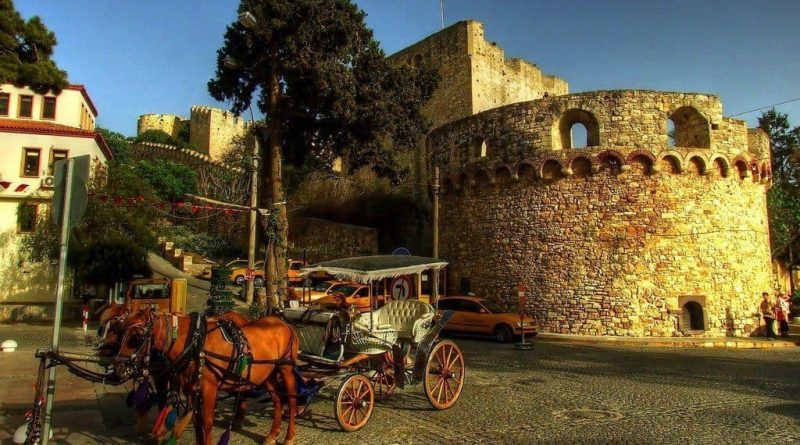Cesme Castle
Cesme Castle, one of the symbols of Cesme, whose history dates back 500 years, is one of the structures that you will not want to go without seeing Cesme with its strength it still preserves. In the centuries when the Aegean Sea was not under Turkish rule, it was open to attacks by pirates. Due to this structure, settlements were established in the inner parts of Cesme. Cesme, which belonged to the Ottoman Empire at that time, was attacked twice by the Venetian fleet in 1472 and 1501. Cesme Castle was built in 1508 during the reign of Bayezid II using Genoese and Ottoman architectural styles as a precaution. The castle, which used to be on the seafront, remained a little further inland with the filling of the beach.
Cesme Castle, which still preserves its solid structure despite the centuries passed from the construction of the castle, fought its biggest battle in 1770 during the Ottoman-Russian war. The castle, which was worn out during this war, was repaired again. Weapons brought from Topkapı Museum in 1965 were started to be exhibited in the castle and in 1984 the exhibition was opened as Cesme Archeology Museum. In the museum, handmade pottery and pottery, figures and coins found in excavations in the ancient city of Erythrai, Bağrası are exhibited. These works have a very important place in terms of discovering the rich history of the region.
From Evliya Çelebi's Book of Travels ...
“About a low rock on the sea shore; The west side is the sea, the east side is the desert and mountain. All of the houses in the fortress are fifty covered houses facing the sea towards Chios from the west. Dizdarı and his 185 soldiers always sit in this. The castle is the rectangular shaped, stone-built Hoşa-bad castle. This castle is longitudinal from east to west, its length is two hundred steps from the edge of the downhill ditch, and its width is one hundred and fifty steps. For this calculation, the castle is seven hundred steps all around. It is a deep ditch on three sides. However, there is no moat as the west side rocks the sea. It has a solid iron door that opens to the suburb facing the Qibla (south). There is a drawbridge on the trench and a crossing bridge. This door side is a two-story castle sofa. The inner castle has an iron gate facing the west, which is the gate with a date on it. There is another layer of iron door inside this door. Thus, the inner castle becomes a two-story door. Above these two doors is the upper floor mosque of Sultan Bayezid II. "


